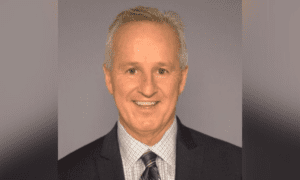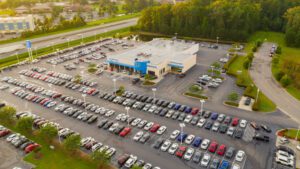Are you accurately assessing wildfire risk? Why granular data and foundational science matter
This post is part of a series sponsored by CoreLogic.
Climate change is having an impact on natural hazards all around the world — wildfires are more frequent, larger, and more intense than they have been in the past. Preparing for and responding to wildfire risks to help protect home and business owners are more critical than ever.
But for insurers to accurately assess the risk of properties within their portfolio, they must ensure that the wildfire risk assessment tools they choose to purchase are informed by up-to-date, high-resolution data and the latest scientific understanding of wildfires.
The Problem with Historical Data
The CoreLogic Brushfire model employs the industry’s most granular and up-to-date fuel data. Proprietary fuel updates inform it at a 30-meter or higher resolution, which is far more granular than the publicly-available USDA Forest Service Wildfire Hazard Potential (WHP) model used by many other wildfire models in the industry. The WHP is powered by data at the 270-meter level, providing a much less accurate risk assessment.
Other problems with WHP include that the data informing it is both old and unreliable for use in the property insurance industry. For example, WHP 2018 was built using data reflecting the conditions on the ground at the end of 2012. And WHP 2020 reflects landscape conditions on the ground at the end of 2014. By contrast, the 2022 version of the CoreLogic Brushfire model reflects conditions on the ground as of 2021, powered by 30-meter or higher resolution satellite imagery that is further enhanced by high resolution imagery from the wildland-urban-interface (WUI) at a 5-meter level.
Moreover, many wildfire modeling products tout using artificial intelligence (AI), but this AI is trained using only the most recent, largest, and most destructive historical fire events. This is problematic because only around 1% of wildfires become catastrophically destructive. Building a model heavily weighted on these rare events ignores the 99% of fires stopped before they can cause significant property damage. This results in many properties being categorized in a higher wildfire risk class than they really are.
Model Changes
Another essential element of wildfire risk modeling is ensuring that the model accounts for changes in land use, primarily the removal of wildland fuels cleared for residential or commercial development. It is also critical to ensure your wildfire risk model provider has wildfire scientists and GIS professionals who are experts in their field, incorporating the latest science into their models.
CoreLogic updates its data on a quarterly basis to ensure risk is assessed correctly, especially as development accelerates in the WUI. CoreLogic also does a full annual update with the latest fuel information and incorporates the previous year’s wildfires and hazards. With a staff of Ph.D.-level wildfire scientists and structural engineers, CoreLogic takes risk assessment further by employing a proprietary methodology that enables a more granular risk management control and reporting level. This helps insurers identify the location of the wildfire threat in relation to the at-risk structures as accurately as possible.
Understand Your Risk Assessment Tool
Wildfire risk assessment is a complicated business. Relying on the WHP, a relatively low-resolution dataset, and relying on only a sub-set of historical fire events are both contributing to the overestimation of risk, resulting in inaccurate assessments and lost opportunities for insurers to write new business in wildfire-prone states.
CoreLogic’s brushfire model has a proven history of combining high-resolution datasets with wildfire models informed by the latest science. It is a tool that insurers can use to better assess risk and capture new business opportunities. For this reason, insurers need to do their due diligence on the wildfire modeling products they decide to employ.
Topics
Catastrophe
Natural Disasters
Wildfire
Interested in Catastrophe?
Get automatic alerts for this topic.





